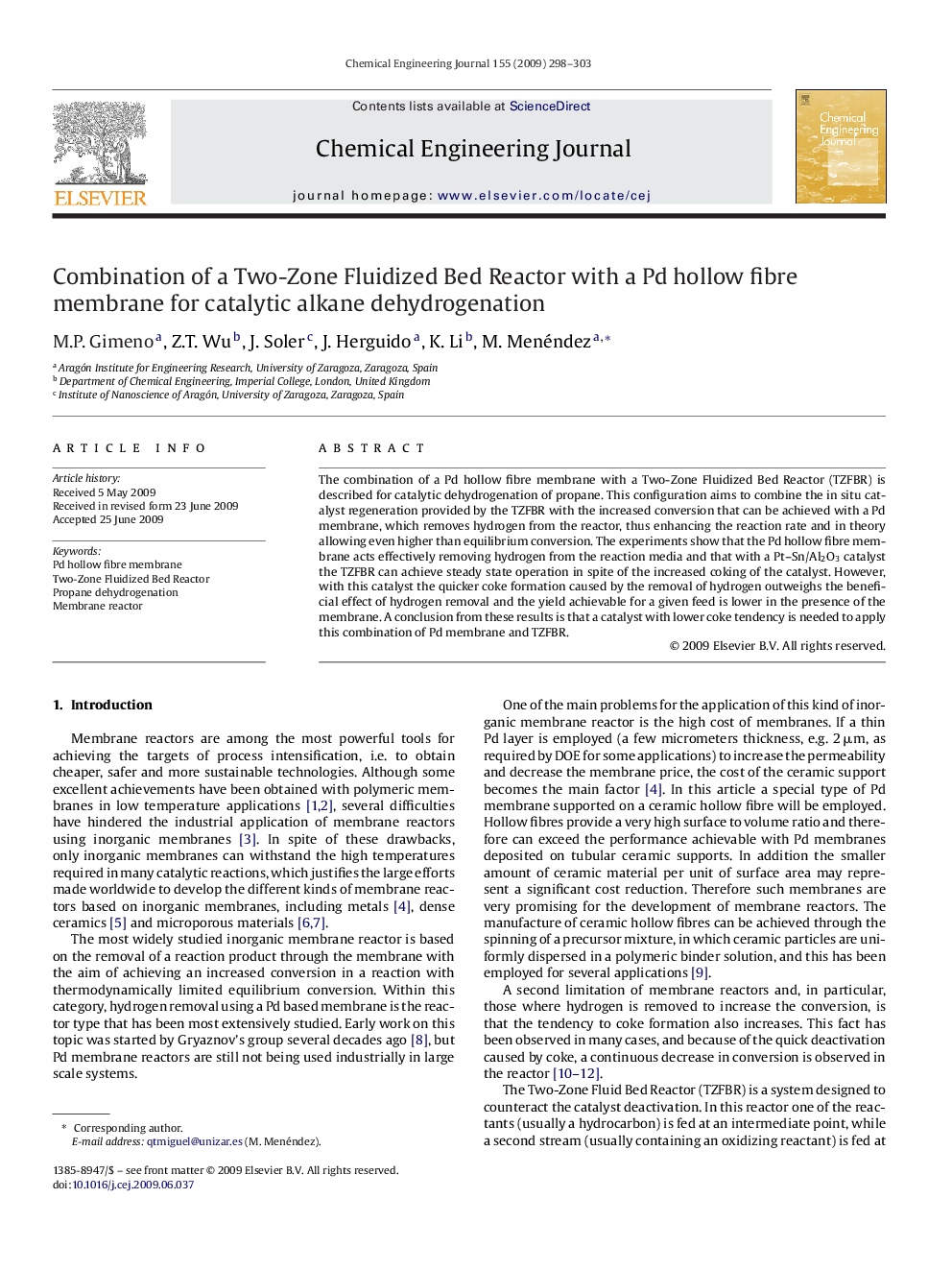| Article ID | Journal | Published Year | Pages | File Type |
|---|---|---|---|---|
| 153337 | Chemical Engineering Journal | 2009 | 6 Pages |
The combination of a Pd hollow fibre membrane with a Two-Zone Fluidized Bed Reactor (TZFBR) is described for catalytic dehydrogenation of propane. This configuration aims to combine the in situ catalyst regeneration provided by the TZFBR with the increased conversion that can be achieved with a Pd membrane, which removes hydrogen from the reactor, thus enhancing the reaction rate and in theory allowing even higher than equilibrium conversion. The experiments show that the Pd hollow fibre membrane acts effectively removing hydrogen from the reaction media and that with a Pt–Sn/Al2O3 catalyst the TZFBR can achieve steady state operation in spite of the increased coking of the catalyst. However, with this catalyst the quicker coke formation caused by the removal of hydrogen outweighs the beneficial effect of hydrogen removal and the yield achievable for a given feed is lower in the presence of the membrane. A conclusion from these results is that a catalyst with lower coke tendency is needed to apply this combination of Pd membrane and TZFBR.
